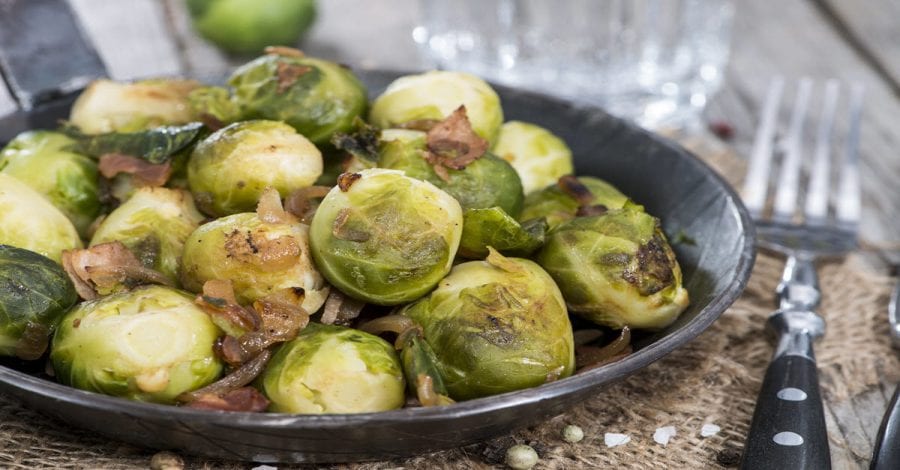CARDIO BLD-FLOW RESEARCH
Posted in Videos & Articles
Kröncke KD, Fehsel K, Kolb-Bachofen V. Nitric oxide: cytotoxicity versus cytoprotection–how, why, when, and where? Nitric Oxide. 1997 Apr;1(2):107-20. doi: 10.1006/niox.1997.0118. PMID: 9701050.
Heart Disease Facts. Centers for Disease Control and Prevention. Retrieved May 28, 2021 from https://www.cdc.gov/heartdisease/facts.htm
Moncada, S., & Higgs, E. A. (2006). Nitric oxide and the vascular endothelium. Handbook of experimental pharmacology, (176 Pt 1), 213–254. https://doi.org/10.1007/3-540-32967-6_7
Hord N. G. (2011). Dietary nitrates, nitrites, and cardiovascular disease. Current atherosclerosis reports, 13(6), 484–492. https://doi.org/10.1007/s11883-011-0209-9
Siervo, M., Lara, J., Ogbonmwan, I., & Mathers, J. C. (2013). Inorganic nitrate and beetroot juice supplementation reduces blood pressure in adults: a systematic review and meta-analysis. The Journal of nutrition, 143(6), 818–826. https://doi.org/10.3945/jn.112.170233
Siervo, M., Shannon, O., Kandhari, N., Prabhakar, M., Fostier, W., Köchl, C., Rogathi, J., Temu, G., Stephan, B., Gray, W. K., Haule, I., Paddick, S. M., Mmbaga, B. T., & Walker, R. (2020). Nitrate-Rich Beetroot Juice Reduces Blood Pressure in Tanzanian Adults with Elevated Blood Pressure: A Double-Blind Randomized Controlled Feasibility Trial. The Journal of nutrition, 150(9), 2460–2468. https://doi.org/10.1093/jn/nxaa170
Domínguez, R., Maté-Muñoz, J. L., Cuenca, E., García-Fernández, P., Mata-Ordoñez, F., Lozano-Estevan, M. C., Veiga-Herreros, P., da Silva, S. F., & Garnacho-Castaño, M. V. (2018). Effects of beetroot juice supplementation on intermittent high-intensity exercise efforts. Journal of the International Society of Sports Nutrition, 15, 2. https://doi.org/10.1186/s12970-017-0204-9
Domínguez, R., Cuenca, E., Maté-Muñoz, J. L., García-Fernández, P., Serra-Paya, N., Estevan, M. C., Herreros, P. V., & Garnacho-Castaño, M. V. (2017). Effects of Beetroot Juice Supplementation on Cardiorespiratory Endurance in Athletes. A Systematic Review. Nutrients, 9(1), 43. https://doi.org/10.3390/nu9010043
Cuenca, E., Jodra, P., Pérez-López, A., González-Rodríguez, L. G., Fernandes da Silva, S., Veiga-Herreros, P., & Domínguez, R. (2018). Effects of Beetroot Juice Supplementation on Performance and Fatigue in a 30-s All-Out Sprint Exercise: A Randomized, Double-Blind Cross-Over Study. Nutrients, 10(9), 1222. https://doi.org/10.3390/nu10091222
Bonilla Ocampo, D. A., Paipilla, A. F., Marín, E., Vargas-Molina, S., Petro, J. L., & Pérez-Idárraga, A. (2018). Dietary Nitrate from Beetroot Juice for Hypertension: A Systematic Review. Biomolecules, 8(4), 134. https://doi.org/10.3390/biom8040134
Ajiboye, T. O., Salawu, N. A., Yakubu, M. T., Oladiji, A. T., Akanji, M. A., & Okogun, J. I. (2011). Antioxidant and drug detoxification potentials of Hibiscus sabdariffa anthocyanin extract. Drug and chemical toxicology, 34(2), 109–115. https://doi.org/10.3109/01480545.2010.536767
Ochani, P. C., & D’Mello, P. (2009). Antioxidant and antihyperlipidemic activity of Hibiscus sabdariffa Linn. leaves and calyces extracts in rats. Indian journal of experimental biology, 47(4), 276–282.
Mezni, A., Mhadhbi, L., Khazri, A., Sellami, B., Dellali, M., Mahmoudi, E., & Beyrem, H. (2020). The protective effect of Hibiscus sabdariffa calyxes extract against cypermethrin induced oxidative stress in mice. Pesticide biochemistry and physiology, 165, 104463. https://doi.org/10.1016/j.pestbp.2019.09.007
Sinha, N., & Dabla, P. K. (2015). Oxidative stress and antioxidants in hypertension-a current review. Current hypertension reviews, 11(2), 132–142. https://doi.org/10.2174/1573402111666150529130922
Peoples, J. N., Saraf, A., Ghazal, N., Pham, T. T., & Kwong, J. Q. (2019). Mitochondrial dysfunction and oxidative stress in heart disease. Experimental & molecular medicine, 51(12), 1–13. https://doi.org/10.1038/s12276-019-0355-7
Hopkins, A. L., Lamm, M. G., Funk, J. L., & Ritenbaugh, C. (2013). Hibiscus sabdariffa L. in the treatment of hypertension and hyperlipidemia: a comprehensive review of animal and human studies. Fitoterapia, 85, 84–94. https://doi.org/10.1016/j.fitote.2013.01.003
Zheoat, A. M., Gray, A. I., Igoli, J. O., Ferro, V. A., & Drummond, R. M. (2019). Hibiscus acid from Hibiscus sabdariffa (Malvaceae) has a vasorelaxant effect on the rat aorta. Fitoterapia, 134, 5–13. https://doi.org/10.1016/j.fitote.2019.01.012
Najafpour Boushehri, S., Karimbeiki, R., Ghasempour, S., Ghalishourani, S. S., Pourmasoumi, M., Hadi, A., Mbabazi, M., Pour, Z. K., Assarroudi, M., Mahmoodi, M., Khosravi, A., Mansour-Ghanaei, F., & Joukar, F. (2020). The efficacy of sour tea (Hibiscus sabdariffa L.) on selected cardiovascular disease risk factors: A systematic review and meta-analysis of randomized clinical trials. Phytotherapy research : PTR, 34(2), 329–339. https://doi.org/10.1002/ptr.6541
Abubakar, S. M., Ukeyima, M. T., Spencer, J., & Lovegrove, J. A. (2019). Acute Effects of Hibiscus Sabdariffa Calyces on Postprandial Blood Pressure, Vascular Function, Blood Lipids, Biomarkers of Insulin Resistance and Inflammation in Humans. Nutrients, 11(2), 341. https://doi.org/10.3390/nu11020341
Hadi, A., Pourmasoumi, M., Kafeshani, M., Karimian, J., Maracy, M. R., & Entezari, M. H. (2017). The Effect of Green Tea and Sour Tea (Hibiscus sabdariffa L.) Supplementation on Oxidative Stress and Muscle Damage in Athletes. Journal of dietary supplements, 14(3), 346–357. https://doi.org/10.1080/19390211.2016.1237400
Mozaffari-Khosravi, H., Jalali-Khanabadi, B. A., Afkhami-Ardekani, M., & Fatehi, F. (2009). Effects of sour tea (Hibiscus sabdariffa) on lipid profile and lipoproteins in patients with type II diabetes. Journal of alternative and complementary medicine (New York, N.Y.), 15(8), 899–903. https://doi.org/10.1089/acm.2008.0540
Gurrola-Díaz, C. M., García-López, P. M., Sánchez-Enríquez, S., Troyo-Sanromán, R., Andrade-González, I., & Gómez-Leyva, J. F. (2010). Effects of Hibiscus sabdariffa extract powder and preventive treatment (diet) on the lipid profiles of patients with metabolic syndrome (MeSy). Phytomedicine : international journal of phytotherapy and phytopharmacology, 17(7), 500–505. https://doi.org/10.1016/j.phymed.2009.10.014
Aziz, Z., Wong, S. Y., & Chong, N. J. (2013). Effects of Hibiscus sabdariffa L. on serum lipids: a systematic review and meta-analysis. Journal of ethnopharmacology, 150(2), 442–450. https://doi.org/10.1016/j.jep.2013.09.042
Lü, J. M., Yao, Q., & Chen, C. (2009). Ginseng compounds: an update on their molecular mechanisms and medical applications. Current vascular pharmacology, 7(3), 293–302. https://doi.org/10.2174/157016109788340767
Lee, Y. M., Yoon, H., Park, H. M., Song, B. C., & Yeum, K. J. (2017). Implications of red Panax ginseng in oxidative stress associated chronic diseases. Journal of ginseng research, 41(2), 113–119. https://doi.org/10.1016/j.jgr.2016.03.003
Kim J. H. (2012). Cardiovascular Diseases and Panax ginseng: A Review on Molecular Mechanisms and Medical Applications. Journal of ginseng research, 36(1), 16–26. https://doi.org/10.5142/jgr.2012.36.1.16
Lee, C. H., & Kim, J. H. (2014). A review on the medicinal potentials of ginseng and ginsenosides on cardiovascular diseases. Journal of ginseng research, 38(3), 161–166. https://doi.org/10.1016/j.jgr.2014.03.001
McKay D. (2004). Nutrients and botanicals for erectile dysfunction: examining the evidence. Alternative medicine review : a journal of clinical therapeutic, 9(1), 4–16.
Jang, D. J., Lee, M. S., Shin, B. C., Lee, Y. C., & Ernst, E. (2008). Red ginseng for treating erectile dysfunction: a systematic review. British journal of clinical pharmacology, 66(4), 444–450. https://doi.org/10.1111/j.1365-2125.2008.03236.x
Reay, J. L., Kennedy, D. O., & Scholey, A. B. (2005). Single doses of Panax ginseng (G115) reduce blood glucose levels and improve cognitive performance during sustained mental activity. Journal of psychopharmacology (Oxford, England), 19(4), 357–365. https://doi.org/10.1177/0269881105053286
Choi, J., Kim, T. H., Choi, T. Y., & Lee, M. S. (2013). Ginseng for health care: a systematic review of randomized controlled trials in Korean literature. PloS one, 8(4), e59978. https://doi.org/10.1371/journal.pone.0059978
Geng, J., Dong, J., Ni, H., Lee, M. S., Wu, T., Jiang, K., Wang, G., Zhou, A. L., & Malouf, R. (2010). Ginseng for cognition. The Cochrane database of systematic reviews, (12), CD007769. https://doi.org/10.1002/14651858.CD007769.pub2
Mashhadi, N. S., Ghiasvand, R., Askari, G., Hariri, M., Darvishi, L., & Mofid, M. R. (2013). Anti-oxidative and anti-inflammatory effects of ginger in health and physical activity: review of current evidence. International journal of preventive medicine, 4(Suppl 1), S36–S42.
Wang, S., Zhang, C., Yang, G., & Yang, Y. (2014). Biological properties of 6-gingerol: a brief review. Natural product communications, 9(7), 1027–1030.
What happens to the brain in Alzheimer’s Disease? NIH Institute on Aging. Retrieved May 28, 2021 from https://www.nia.nih.gov/health/what-happens-brain-alzheimers-disease
Hussein, U. K., Hassan, N., Elhalwagy, M., Zaki, A. R., Abubakr, H. O., Nagulapalli Venkata, K. C., Jang, K. Y., & Bishayee, A. (2017). Ginger and Propolis Exert Neuroprotective Effects against Monosodium Glutamate-Induced Neurotoxicity in Rats. Molecules (Basel, Switzerland), 22(11), 1928. https://doi.org/10.3390/molecules22111928
El-Akabawy, G., & El-Kholy, W. (2014). Neuroprotective effect of ginger in the brain of streptozotocin-induced diabetic rats. Annals of anatomy = Anatomischer Anzeiger : official organ of the Anatomische Gesellschaft, 196(2-3), 119–128. https://doi.org/10.1016/j.aanat.2014.01.003
Verma, S. K., Singh, M., Jain, P., & Bordia, A. (2004). Protective effect of ginger, Zingiber officinale Rosc on experimental atherosclerosis in rabbits. Indian journal of experimental biology, 42(7), 736–738.
Wang, J., Sjöberg, S., Tang, T. T., Oörni, K., Wu, W., Liu, C., Secco, B., Tia, V., Sukhova, G. K., Fernandes, C., Lesner, A., Kovanen, P. T., Libby, P., Cheng, X., & Shi, G. P. (2014). Cathepsin G activity lowers plasma LDL and reduces atherosclerosis. Biochimica et biophysica acta, 1842(11), 2174–2183. https://doi.org/10.1016/j.bbadis.2014.07.026
Working G. S. E. Memory of the post-menopause women. American Journal of Applied Sciences. 2011;8(12):1241–1248.
Gomar A., Hosseini A., Mirazi N. Memory enhancement by administration of ginger (Zingiber officinale) extract on morphine-induced memory impairment in male rats. Journal of Acute Disease. 2014;3(3):212–217. doi: 10.1016/s2221-6189(14)60047-0.
Xiao, P., Zhang, K., Tao, Z., Liu, N., & Ge, B. (2017). Cardioprotective effect of Pycnogenol in ischemic-reperfusion injury (IRI) in rats. Cellular and molecular biology (Noisy-le-Grand, France), 63(10), 49–53. https://doi.org/10.14715/cmb/2017.63.10.7
Liu, R., Fan, B., Cong, H., Ikuyama, S., Guan, H., & Gu, J. (2016). Pycnogenol Reduces Toll-Like Receptor 4 Signaling Pathway-Mediated Atherosclerosis Formation in Apolipoprotein E-Deficient Mice. Journal of cardiovascular pharmacology, 68(4), 292–303. https://doi.org/10.1097/FJC.0000000000000415
Hadi, A., Pourmasoumi, M., Mohammadi, H., Javaheri, A., & Rouhani, M. H. (2019). The impact of pycnogenol supplementation on plasma lipids in humans: A systematic review and meta-analysis of clinical trials. Phytotherapy research : PTR, 33(2), 276–287. https://doi.org/10.1002/ptr.6234
Aydın, S., Bacanlı, M., Anlar, H. G., Çal, T., Arı, N., Ündeğer Bucurgat, Ü., Başaran, A. A., & Başaran, N. (2019). Preventive role of Pycnogenol® against the hyperglycemia-induced oxidative stress and DNA damage in diabetic rats. Food and chemical toxicology : an international journal published for the British Industrial Biological Research Association, 124, 54–63. https://doi.org/10.1016/j.fct.2018.11.038
Gulati O. P. (2015). Pycnogenol® in Metabolic Syndrome and Related Disorders. Phytotherapy research : PTR, 29(7), 949–968. https://doi.org/10.1002/ptr.5341
Kwak, C. J., Kubo, E., Fujii, K., Nishimura, Y., Kobuchi, S., Ohkita, M., Yoshimura, M., Kiso, Y., & Matsumura, Y. (2009). Antihypertensive effect of French maritime pine bark extract (Flavangenol): possible involvement of endothelial nitric oxide-dependent vasorelaxation. Journal of hypertension, 27(1), 92–101. https://doi.org/10.1097/hjh.0b013e3283186994
Vinciguerra, G., Belcaro, G., Bonanni, E., Cesarone, M. R., Rotondi, V., Ledda, A., Hosoi, M., Dugall, M., Cacchio, M., & Cornelli, U. (2013). Evaluation of the effects of supplementation with Pycnogenol® on fitness in normal subjects with the Army Physical Fitness Test and in performances of athletes in the 100-minute triathlon. The Journal of sports medicine and physical fitness, 53(6), 644–654.
Luzzi, R., Belcaro, G., Zulli, C., Cesarone, M. R., Cornelli, U., Dugall, M., Hosoi, M., & Feragalli, B. (2011). Pycnogenol® supplementation improves cognitive function, attention and mental performance in students. Panminerva medica, 53(3 Suppl 1), 75–82.
Belcaro, G., Luzzi, R., Dugall, M., Ippolito, E., & Saggino, A. (2014). Pycnogenol® improves cognitive function, attention, mental performance and specific professional skills in healthy professionals aged 35-55. Journal of neurosurgical sciences, 58(4), 239–248.
Belcaro, G., Luzzi, R., Dugall, M., Ippolito, E., & Saggino, A. (2014). Pycnogenol® improves cognitive function, attention, mental performance and specific professional skills in healthy professionals aged 35-55. Journal of neurosurgical sciences, 58(4), 239–248.
Zarezadeh, M., Baluchnejadmojarad, T., Kiasalari, Z., Afshin-Majd, S., & Roghani, M. (2017). Garlic active constituent s-allyl cysteine protects against lipopolysaccharide-induced cognitive deficits in the rat: Possible involved mechanisms. European journal of pharmacology, 795, 13–21. https://doi.org/10.1016/j.ejphar.2016.11.051
Hosoi, M., Belcaro, G., Saggino, A., Luzzi, R., Dugall, M., & Feragalli, B. (2018). Pycnogenol® supplementation in minimal cognitive dysfunction. Journal of neurosurgical sciences, 62(3), 279–284. https://doi.org/10.23736/S0390-5616.18.04382-5
Stanislavov, R., & Rohdewald, P. (2015). Improvement of erectile function by a combination of French maritime pine bark and roburins with aminoacids. Minerva urologica e nefrologica = The Italian journal of urology and nephrology, 67(1), 27–32.
Weller, Richard & Wang, Yuedong & He, Jingyi & Maddux, Franklin & Usvyat, Len & Zhang, Hanjie & Feelisch, Martin & Kotanko, Peter. (2020). Does Incident Solar Ultraviolet Radiation Lower Blood Pressure?. Journal of the American Heart Association. 9. e013837. 10.1161/JAHA.119.013837.
Clark, J. L., Zahradka, P., & Taylor, C. G. (2015). Efficacy of flavonoids in the management of high blood pressure. Nutrition reviews, 73(12), 799–822. https://doi.org/10.1093/nutrit/nuv048
Bleakley, C. M., & Davison, G. W. (2010). What is the biochemical and physiological rationale for using cold-water immersion in sports recovery? A systematic review. British journal of sports medicine, 44(3), 179–187. https://doi.org/10.1136/bjsm.2009.065565
Miyaji, A., Sugimori, K, et al. (2018). Short- and long-term effects of using a facial massage roller on facial blood flow and vascular reactivity. Complementary Therapies in Medicine. 41. 271-276. https://doi.org/10.1016/j.ctim.2018.09.009
Borek C. (2006). Garlic reduces dementia and heart-disease risk. The Journal of nutrition, 136(3 Suppl), 810S–812S. https://doi.org/10.1093/jn/136.3.810S
Borek C. (2001). Antioxidant health effects of aged garlic extract. The Journal of nutrition, 131(3s), 1010S–5S. https://doi.org/10.1093/jn/131.3.1010S
Ashraf, R., Khan, R. A., Ashraf, I., & Qureshi, A. A. (2013). Effects of Allium sativum (garlic) on systolic and diastolic blood pressure in patients with essential hypertension. Pakistan journal of pharmaceutical sciences, 26(5), 859–863.
Ried K. (2020). Garlic lowers blood pressure in hypertensive subjects, improves arterial stiffness and gut microbiota: A review and meta-analysis. Experimental and therapeutic medicine, 19(2), 1472–1478. https://doi.org/10.3892/etm.2019.8374
Josling P. (2001). Preventing the common cold with a garlic supplement: a double-blind, placebo-controlled survey. Advances in therapy, 18(4), 189–193. https://doi.org/10.1007/BF02850113
Nantz, M. P., Rowe, C. A., Muller, C. E., Creasy, R. A., Stanilka, J. M., & Percival, S. S. (2012). Supplementation with aged garlic extract improves both NK and γδ-T cell function and reduces the severity of cold and flu symptoms: a randomized, double-blind, placebo-controlled nutrition intervention. Clinical nutrition (Edinburgh, Scotland), 31(3), 337–344. https://doi.org/10.1016/j.clnu.2011.11.019
Verma, S. K., Rajeevan, V., Jain, P., & Bordia, A. (2005). Effect of garlic (Allium sativum) oil on exercise tolerance in patients with coronary artery disease. Indian journal of physiology and pharmacology, 49(1), 115–118.
Morihara, N., Nishihama, T., Ushijima, M., Ide, N., Takeda, H., & Hayama, M. (2007). Garlic as an anti-fatigue agent. Molecular nutrition & food research, 51(11), 1329–1334. https://doi.org/10.1002/mnfr.200700062
Recommended
The Benefits of Dietary Fiber are Remarkable
Several research studies are showing a positive correlation between fiber intake and aging. One study conducted over a 10-year span showed that most participants who were meeting daily dietary fiber intake aged gracefully. So what …
He Shou Wu: The Legendary Root of Youth and Vitality
In an ancient Chinese record, a man by the name of He had grown past middle age, his hair had turned gray, and he had been unable to father any children. Taking the advice of …
Life Hacks to Increase Hormone Levels Naturally – Based on The Research
For as long as man has wanted a better body, he’s been looking for a wonder drug that will give it to him. Of course, you know there’s no substitute for hard work and consistency …
YES, I’M IN!
- Exclusive Offers
- Product Giveaways
- Latest Research
- New Product Launches






